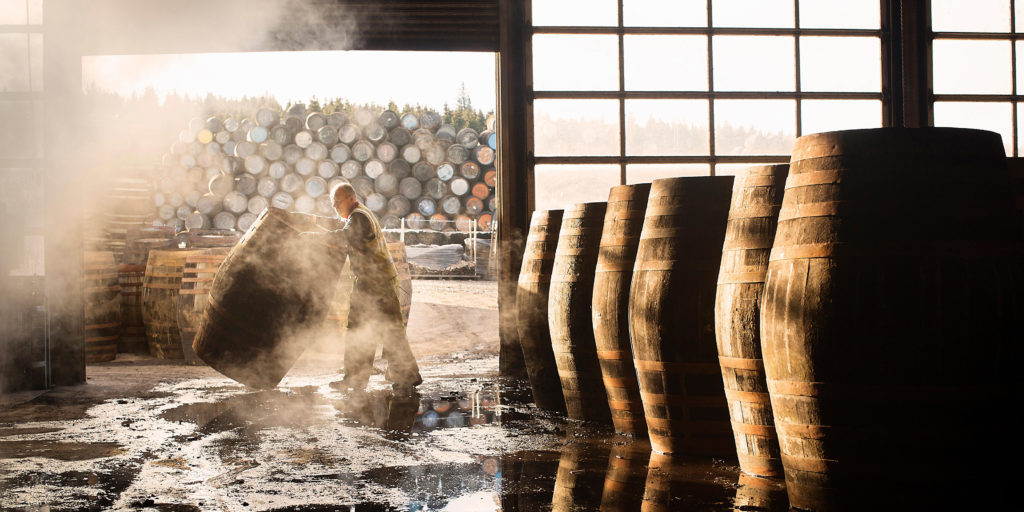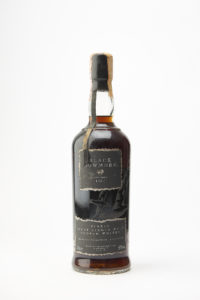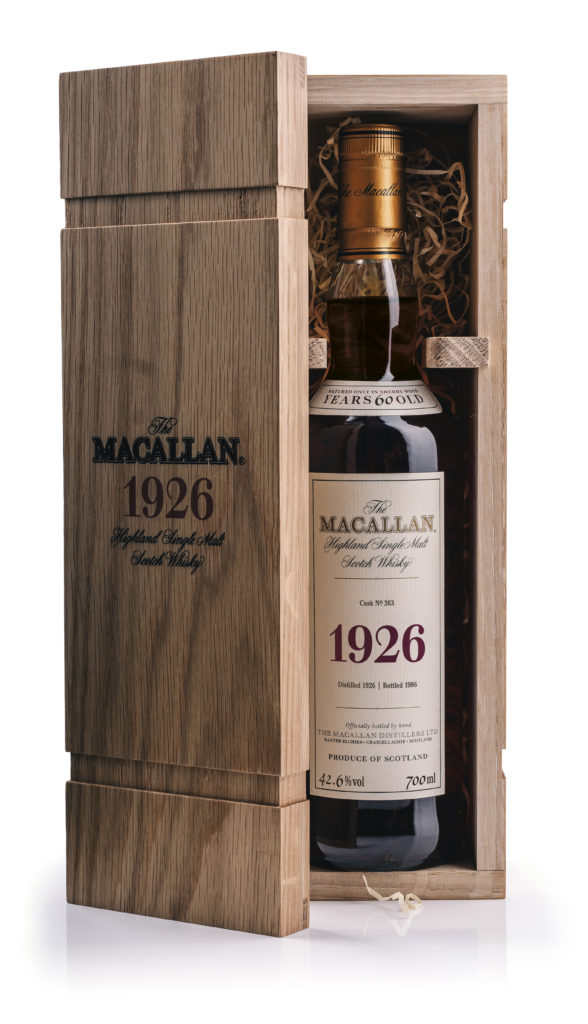You can do two sensible things with a nice bottle of whisky: drink it and enjoy it, or keep it and hope it becomes worth more. Enjoying it is not that difficult, but investing in whisky requires the necessary knowledge...
Text Jacob-Jan Esmeijer
A former flower bulb shed, located on the Heereweg in Lisse: that was where the seed was planted in 2005. This was where investing in Scotch single malt whisky was to be made accessible. With some imagination, this listed building is reminiscent of the legendary garage in which Steve Jobs once worked out his ideas, eventually growing Apple into a global company. For just under 15 years after that start in the old bulb shed, Michel Kappen's company is located a village away, and stands Scotch Whisky Investments in Sassenheim is synonymous with investing in a highly profitable investment alternative.
 Liquid (Scottish) gold
Liquid (Scottish) gold
After all, whisky is hot. Not just as a consumer product, but particularly to invest in. A logical development. After all, interest rates have fallen to worrying levels in recent years; sometimes they are even negative. Partly because of this, people have started to look more into ways to realise an attractive return on (part of) their freely investable capital. Then you automatically come into contact with so-called 'alternative investments', in which gold, vintage cars and watches in particular predominate. But with single malt whiskies, and especially those from 'motherland' Scotland, a serious candidate has emerged in the last decade.
Indeed, investing in Scotch single malt whisky has experienced such tremendous growth that it has moved beyond the 'alternative' label and has now developed into a full-fledged and professional investment asset. Rises the question of how it is possible that 'a distillate in a bottle' is so appealing to investors around the world.

"Whisky has experienced tremendous growth as a consumer product in recent years. Bottles are flying out of shops, so to speak. Demand is so high that the international whisky industry, with its beating heart in Scotland, is sometimes struggling to keep up with production," states Michel Kappen, CEO of Scotch Whisky Investments. "For example, The Macallan, a renowned distillery in Scotland, expanded its production facilities some time ago at a cost of around £120 million.
But a whisky will really have to mature in a cask for 25 years before it can call itself 25 years old. And that is exactly why investing in older, exclusive whisky so interesting."
Rising prices
Michel Kappen once worked as a consultant at Rabobank but also had a great passion for whisky. When he wanted to buy a second bottle from the same distillery at his local liquor store within a short time, he noticed that the price had shot up. In hindsight, that was the initial impetus for the company that stands today: Kappen went to research and found that 500 different whiskies showed an annual increase in value of 6.6% between 1936 and 2008.
Kappen continues: "The longer a whisky matures, the more its value increases. On the one hand because the quality increases and on the other because old whisky is scarce. From an age of twenty-five to thirty years, the price increases exponentially. If you go to the liquor store, you will see that a fifteen-year-old Scotch single malt whisky will cost a few tens. The price of a thirty-year-old bottle is easily several hundred euros, and from forty years old onwards, the price can even reach several thousand euros per bottle. So time is money when it comes to the Scottish 'water of life'. And this is also the reason why special Scotch single malt whiskies have performed so stably as an investment in recent years."
 When producing impossible
When producing impossible
But Kappen sees several developments having a positive impact on whisky investing. "Especially with increased demand from Asia, where digestives like cognac and single malt whisky are also status symbols, the prices of bottles of whisky are rising. You have to remember that every bottle opened increases scarcity. Whether you are talking about a bottle of Glenburgie 1964 or Port Dundas 1978, it is not possible to produce a new bottle of either.
Tracking
Investors' search for that one bottle can therefore drive up the price enormously. An example I often cite is that of the Black Bowmore 1964. This whisky, which lives up to its name because of its black colour, was still available in the 1990s for around 70 British pounds. Today, don't be surprised if it is offered for between 25,000 and 35,000 euros."
 Whisky is therefore a serious option for investors. Also because Scotch Whisky International received a licence from the Financial Markets Authority (AFM) in 2013, allowing whisky to be offered as an investment property. So how next for those who want to try their luck with this? Of course, you can start building your own collection today. Browse around a bit on Catawiki and within a few clicks you will already own a nice bottle. Storage and possible insurance are your responsibility and so is any resale.
Whisky is therefore a serious option for investors. Also because Scotch Whisky International received a licence from the Financial Markets Authority (AFM) in 2013, allowing whisky to be offered as an investment property. So how next for those who want to try their luck with this? Of course, you can start building your own collection today. Browse around a bit on Catawiki and within a few clicks you will already own a nice bottle. Storage and possible insurance are your responsibility and so is any resale.
It is also possible to open a whisky portfolio on the World Whisky Index: bottles are then in your possession and are stored insured in the secured whisky vault in Sassenheim. A number of international whisky funds are also among the options for getting started investing in whisky yourself.
Moreover, for those who want to invest in whisky but do not want to worry about it any further, there is the option to outsource this entirely to Scotch Whisky Investments. In 2019, their investment concept was expanded to include Asset management: investors who put in an amount of EUR 100,000 or more are thereby completely unburdened. "Ideal for investors who do not want to worry about investing and buying and selling their investment portfolio," says Kappen. "
Other options
Comparing single malt whisky to other forms of investment, a few things stand out. Gold is often mentioned in the same breath as whisky; both are transparent on price trends. However, the big advantage of whisky is that there are multiple distilleries, which means there is more choice. This makes it more 'unique' than gold. Wine is a beverage that consumers have also invested in over the years. The danger here is that the quality of wine can deteriorate. With bottled whisky, the situation is different: after bottling, the maturation process stops and the distillate can then be stored indefinitely.
Investing in art is also possible but is fairly taste-bound. If you want to get rid of it, you have to be able to find someone with the same taste. And then, of course, there are shares and real estate. Shares can be sold at the touch of a button but their prices can fluctuate enormously. And as with whisky, with real estate you own the property. But where you can sell whisky by the bottle, you need to get rid of a house all at once. Moreover, real estate is high-maintenance. And last but not least of course, with whisky there is always that one comforting consolation: should a bottle of single malt be worth nothing more for whatever reason, you can always drink it...
 €1.7 million for 0.7 litres
€1.7 million for 0.7 litres
October 2019 is the month that will long be remembered by the international whisky community: it became a month of 'The Auction'. A 60-year-old bottle of The Macallan from 1926 was hammered down for some 1.7 million euros. It had previously been assumed that the value would be between £350,000 and £450,000, but so in the end quadrupled for this bottle. This put exclusive (single malt) whisky on the map as an investment in one fell swoop.



